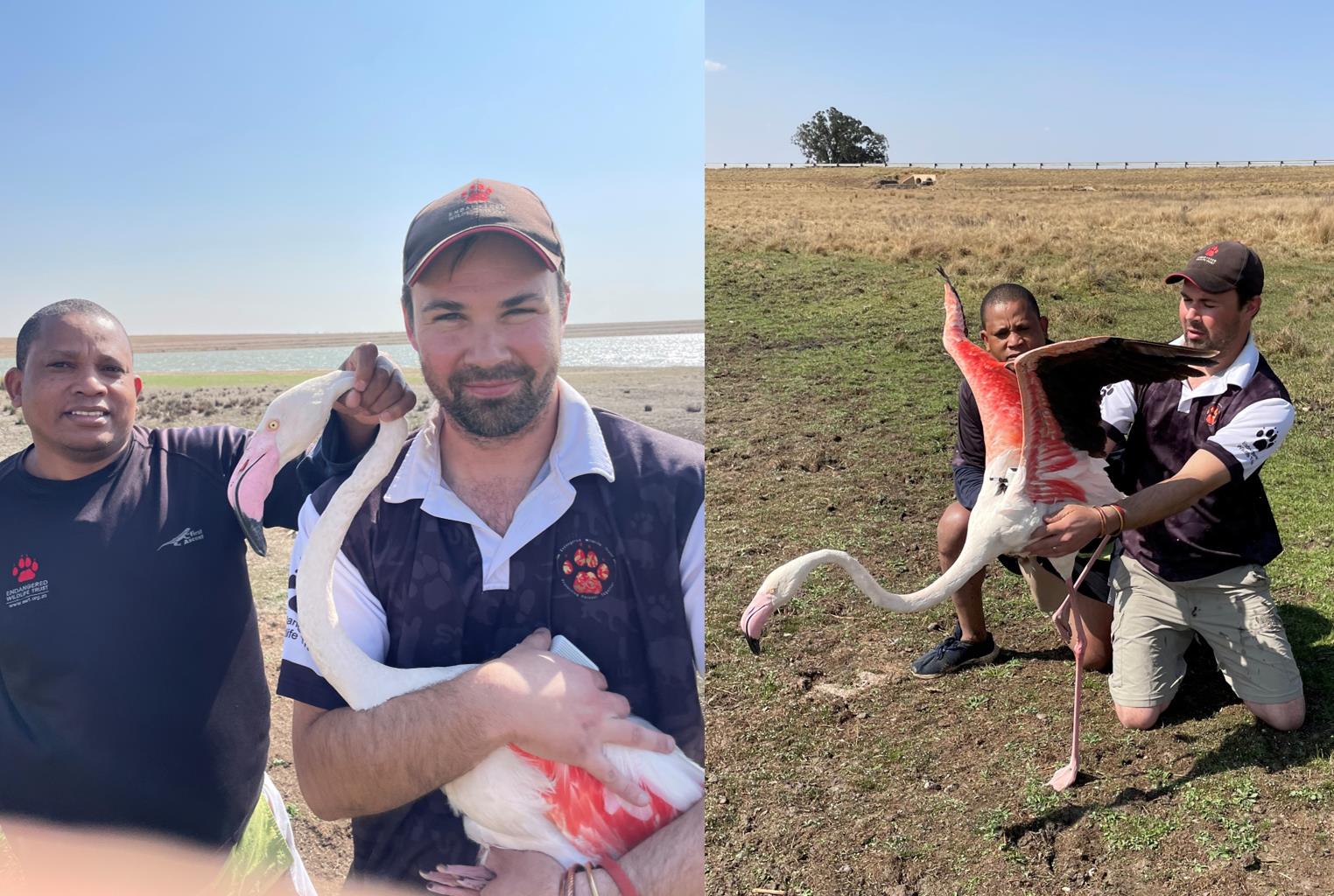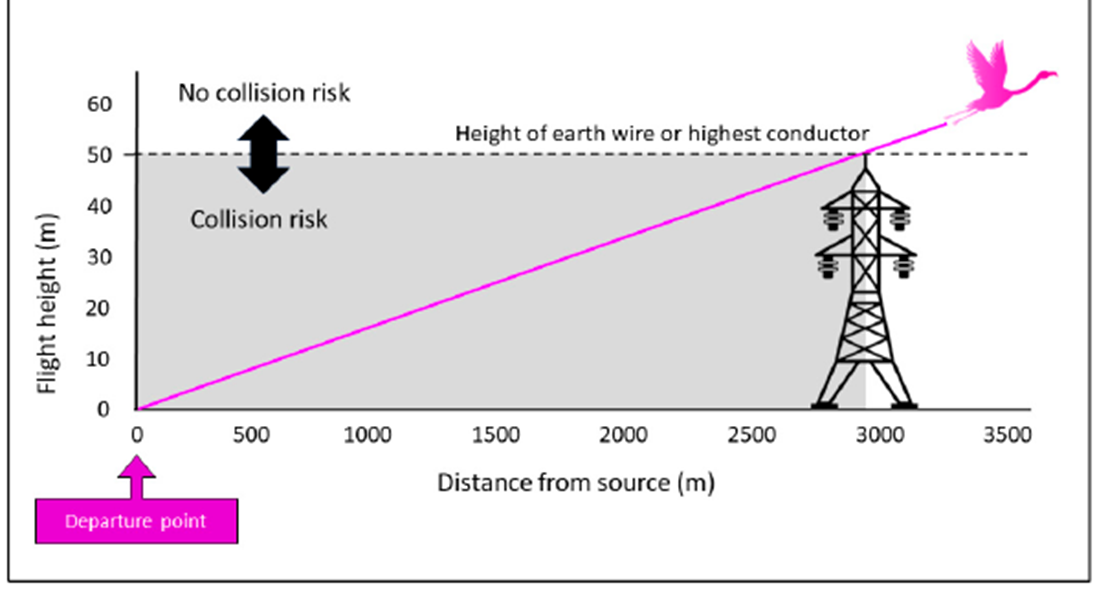Science Snippets:
Targeting Hotspots: Protecting Lesser Flamingos from Power Line Collisions
By: Erin Adams and Lizanne Roxburgh

With an increase in human population comes a rising demand for electricity. However, this also brings the heightened risk of wildlife colliding with the structures that distribute that electricity across the landscape. Birds such as the Lesser Flamingo, which is Near Threatened on the IUCN Red List, frequently collide with power lines, often resulting in fatalities. Solutions like flashing markers on power lines can help reduce the risk, especially for birds that fly at night, like flamingos. However, these methods are costly, meaning they can’t be applied across the entire range of the Lesser Flamingo’s distribution. The best approach, therefore, is to determine where these markers would be most effective in reducing bird collisions with power lines. In a recent publication co-authored by EWT scientists*, the risk of power line collisions was modelled to address this exact need.
Three main inputs were used to create these models for Lesser Flamingos: 1) a habitat suitability index, 2) species exposure, and 3) threat exposure. The habitat suitability index included food availability, water quality, and water availability. Food availability, for instance, can be estimated based on the extent of green colouration in waterbodies, indicating the presence of the flamingos’ preferred food-cyanobacteria and diatoms. Species exposure accounted for the height at which Lesser Flamingos are likely to fly and the abundance of flamingos at a given site. Higher concentrations of flamingos increase the risk of power line collisions, especially when flamingos fly at lower altitudes. The final part of the model focused on threat exposure, including the height of the power line cables and their proximity to waterbodies where flamingos gather.

The risk of Lesser Flamingos colliding with power lines is based on the height of the power line and the flight height of the flamingo. There is no collision risk above 50 m due to the maximum height of power line cables (figure from Pretorius et al. 2023).
The scientists found that habitat suitability and flight height were the best predictors of where Lesser Flamingos are at most risk of colliding with power lines. Flamingos were only at risk of collision with power lines when flying lower than 50 meters (see Figure) and within 3 kilometers from the water’s edge. High-risk power line sections were identified within 3 kilometer buffers around waterbodies, prioritised by habitat suitability for Lesser Flamingos. This approach has significantly reduced the number of power line spans identified for proactive marking with flashing markers. As a result, marking power lines can be done cost-effectively while maximising protection for Lesser Flamingos. This modelling approach can also be adapted for other bird species at risk of colliding with power lines.
*Pretorius, M. D., Galloway-Griesel, T. L., Leeuwner, L., Michael, M. D., Durgapersad, K., & Chetty, K. (2023). Defining Collision Risk: Lesser Flamingo Phoeniconaias minor Power Line Collision Sensitivity and Exposure for Proactive Mitigation. Birds, 4(4), 315-329. https://doi.org/10.3390/birds4040027
